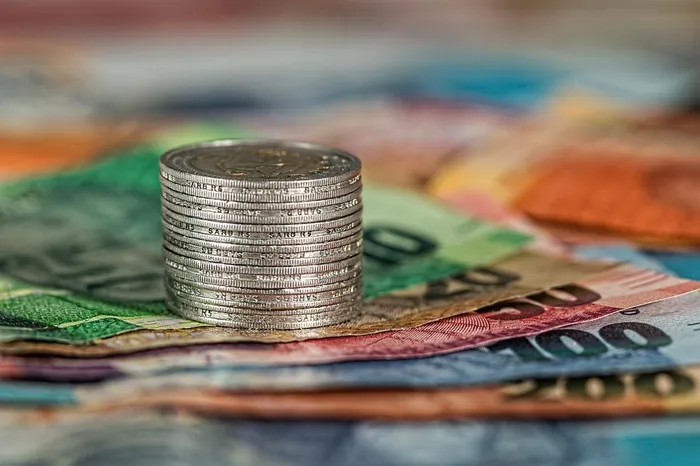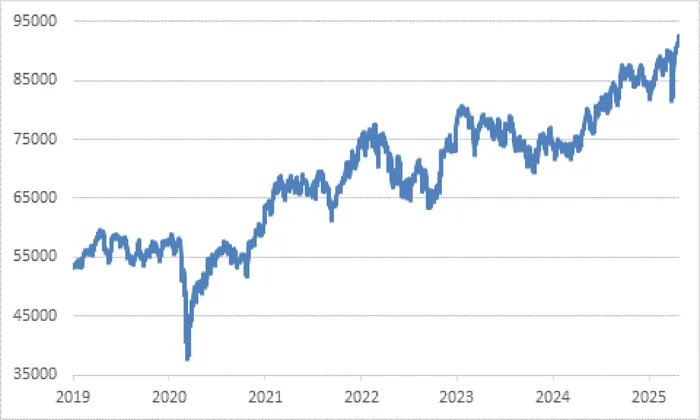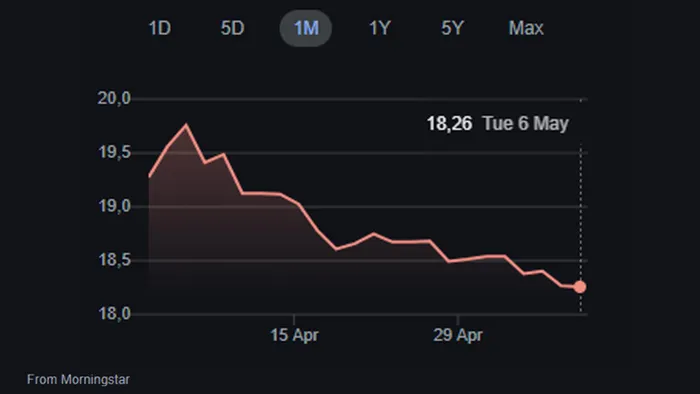
The local currency is gaining ground on the dollar as market watchers keenly await the outcome of the United States’ Federal Reserve interest rate decision on Wednesday.
Image: Pixabay
The local currency is gaining ground on the dollar as market watchers keenly await the outcome of the United States’ Federal Reserve interest rate decision on Wednesday.
On Tuesday, around mid-morning, the rand was trading at its lowest level in a month, having dropped to R18.26 from a monthly peak of R19.76 on April 8. This steady positive trend is the result of investor sentiment turning towards riskier assets, Investec chief economist Annabel Bishop said in a recent note.

ALSI performance in Rands
Image: LSEG Datastream
Bishop noted that the rand’s movement continues to be dominated by events in the US on the back of weak US data, including a 0.3% year-on-year contraction in that superpower’s gross domestic product for the first quarter of the year.
The Fed is expected to cut interest rates by 0.25 percentage points at three meetings before year-end, which is positive for the rand, Bishop said. Should the South African Reserve Bank take its cue from the States, consumers locally may also benefit from interest rate cuts.
Statistics South Africa is set to release the latest inflation data on May 21, the same day that Budget 3.0 will be tabled. Inflation is currently at 2.7% year-on-year and the Reserve Bank’s Monetary Policy Committee will announce its decision on interest rates on May 29, by which time the latest cost of living figures can be considered as part of its thought process.

The Rand's performance
Image: Morningstar
Peter Little, fund manager at Anchor Capital, said that inflation is currently below expectations and there is very little inflationary pressure. The core inflation rate has now spent eight months below the mid-point of the South African Reserve Bank’s target inflation range of 3% to 6%, he said.
Bishop noted that Investec anticipates that the domestic currency will average R18.60 for the second quarter. However, as financial markets become keener on riskier assets given dollar weakness and general US economic issues on the back of US President Donald Trump’s tariff war, the local currency will benefit, she said.
Investec expects the currency to subside back towards R18.00 this month and average R16.80 this quarter.
In his weekly note, Old Mutual wealth investment strategist, Izak Odendaal said that “the rand, meanwhile, behaved exactly as one would expect during an episode of extreme global risk aversion”.
“The rand typically sells off when global investors are jittery and then stabilises and strengthens. It just happened on a very compressed timescale, highlighting once again how difficult it is to time the currency,” Odendaal said.
The JSE is also seeing gains, having recovered from a rout at the beginning of last month to end April “comfortably in positive territory,” said Little.
Odendaal added that local equities more than retraced their losses, and the FTSE/JSE All Share Index is at an all-time high of above 90,000 points. “This is a 20%-plus return over the past year.”
Little added that the “JSE’s rally started with easing tariff-related concerns as the US announced a 90-day pause on implementing reciprocal tariffs, allowing countries time to negotiate better trade terms”.
Gold shares were again a strong contributor to JSE performance as the yellow metal’s price continued to track higher, said Little. He pointed out, however, that gold miners didn’t – unlike the first quarter – deliver most of the JSE’s performance.
IOL
